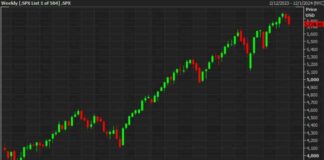The Canadian job market is expected to show signs of continued weakness in the upcoming employment report for October. While there may be an increase of around 15,000 jobs, this growth is not expected to keep up with the expanding labor force and population. As a result, the unemployment rate is likely to rise back up to 6.6% from the previous month’s rate of 6.5%.
Indicators for job conditions in Canada are not looking promising, with job openings falling below pre-pandemic levels and showing a downward trend. Business hiring intentions have also been soft, reflecting a subdued sales outlook for the next year. It is predicted that unemployment in Canada will continue to increase, reaching 7% by early 2025 before starting to improve as hiring demand recovers.
On the other hand, the U.S. economy is in a much stronger position leading up to the Federal Reserve’s interest rate decision. Despite signs of cooling in the labor market, the economy has been resilient, with GDP growth in the third quarter outperforming other advanced economies. The unemployment rate has shown a slight increase, but this is seen as a normalization rather than a cause for concern. The government’s budget deficit is expected to support the economy and inflation in the coming year.
The Federal Reserve is likely to cut interest rates by 25 basis points in the upcoming decision, with further cuts anticipated in the following months. This would bring the Fed funds range to 4% to 4.25% for the remainder of 2025.
Looking ahead, data watchers are keeping an eye on the Canadian trade deficit, which is expected to narrow in September due to lower imports and higher exports. The U.S. trade deficit, on the other hand, is likely to widen in the same month, driven by a decrease in exports and an increase in imports.
Overall, the economic outlook for both Canada and the U.S. is mixed, with challenges and opportunities on the horizon. Investors and business individuals should stay informed and be prepared for potential shifts in the market.

















